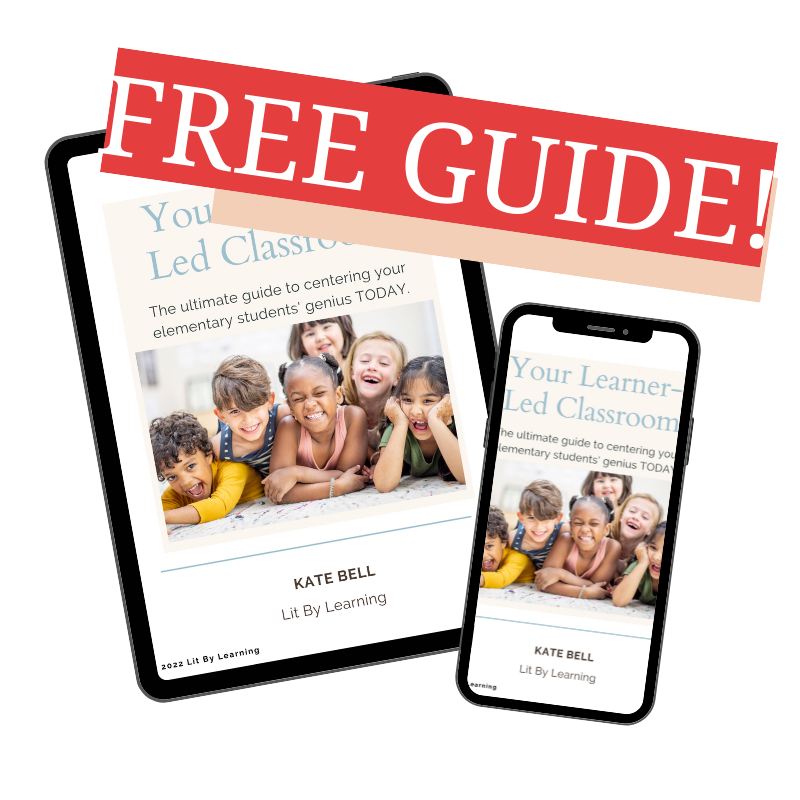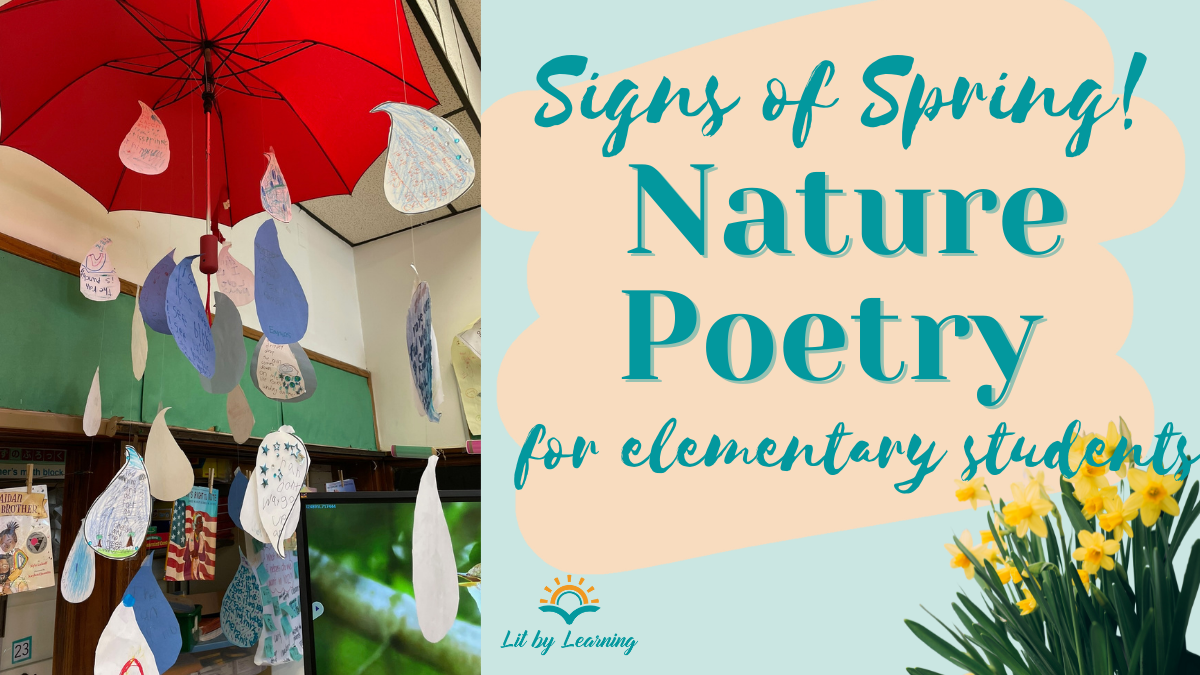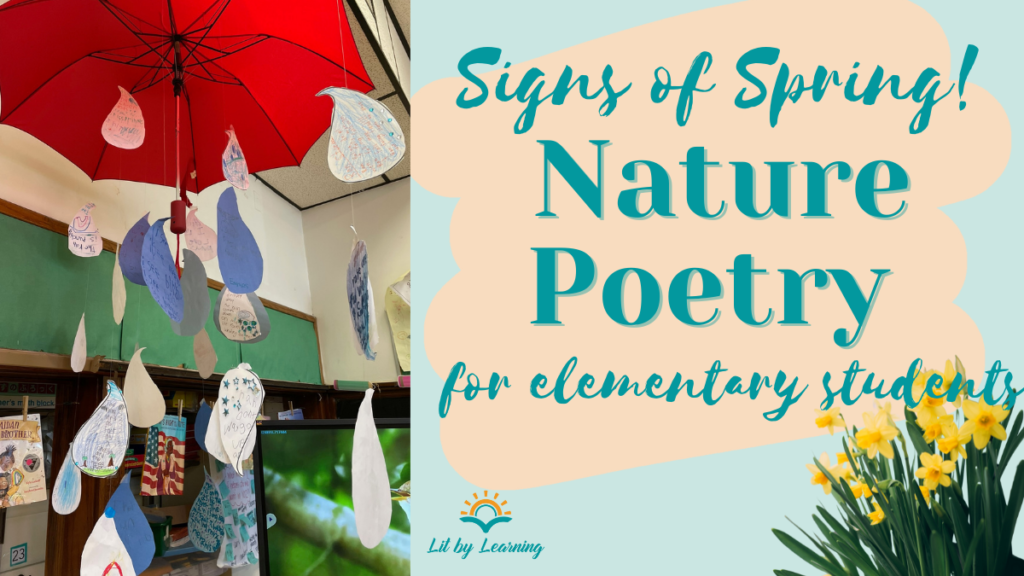
Why spring? Why nature poems for kids?
I don’t know about you, but there’s no season that I watch out for more than Spring. Every day as winter seems to drag on here in the Midwest, I search for signs of the hoped-for season. Is that a bit of green grass? Is it me or is that snow melting? Could that be a crocus popping up?
I’ve found that my elementary students are the same way. Spring seems to call their attention, too, and each budding flower is a cause for celebration. Spring is on its way! I love harnessing this annual curiosity in our Spring-time poetry uni. Read below about how I guide my students on a spring-inspired, poetry-writing inquiry!
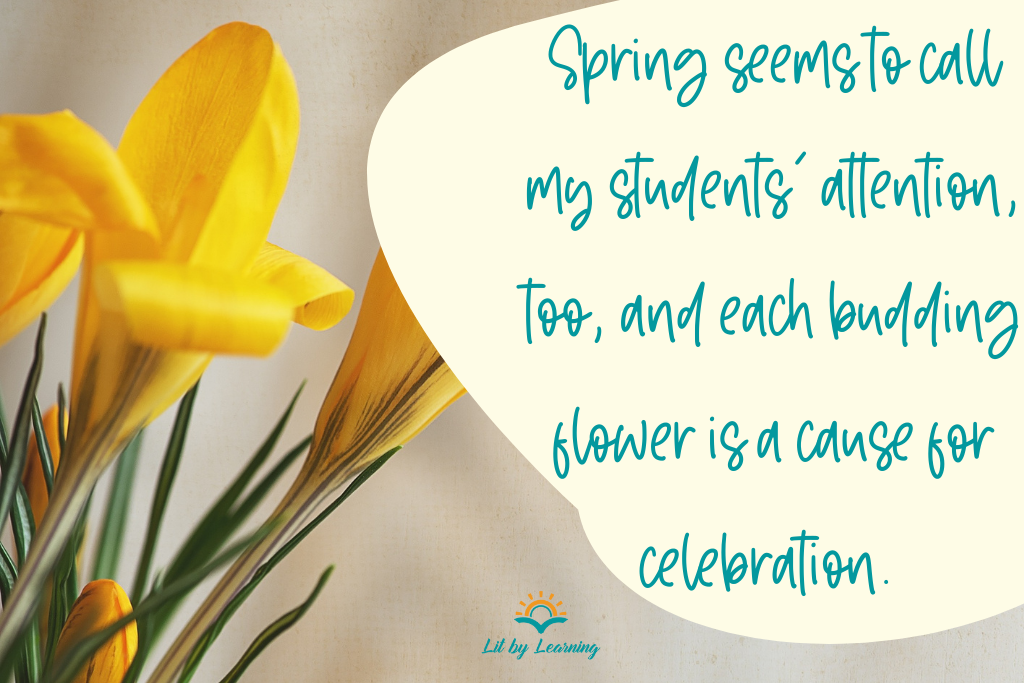
Nature poetry for kids: a chance for cross-curricular connections
Another reason I love studying nature poetry for kids in spring is that it’s perfect for making cross-curricular connections. For first grade science in Illinois, we observe patterns in the sky and the sun’s rotation. Getting outside to observe the sky works perfectly as we also tote our poetry notebooks along. Poets’ tools like repetition and personification also invite cross-curricular connections as we talk about the annual cycle of the seasons and observe the Earth “re-awakening” after a winter’s rest.
Here are the standards I address during this science x poetry x writing unit of inquiry:
- CCSS.ELA-LITERACY.RL.1.4: Identify words and phrases in stories or poems that suggest feelings or appeal to the senses.
- CCSS.ELA-LITERACY.L.1.5: With guidance and support from adults, demonstrate understanding of word relationships and nuances in word meanings.
- CCSS.ELA-LITERACY.L.1.5.D: Distinguish shades of meaning among verbs differing in manner (e.g., look, peek, glance, stare, glare, scowl) and adjectives differing in intensity (e.g., large, gigantic) by defining or choosing them or by acting out the meanings.
- CCSS.ELA-LITERACY.W.1.7: Participate in shared research and writing projects
- CCSS.ELA-LITERACY.W.1.6: With guidance and support from adults, use a variety of digital tools to produce and publish writing, including in collaboration with peers.
- SS.IS.1.K.-2: Create questions to help guide inquiry about a topic with guidance from adults and/or peers
- SS.IS.3.K-2: Gather information from one or two sources with guidance and support from adults and/or peers.
- 1-ESS1-1. Use observations of the sun, moon, and stars to describe patterns that can be predicted.
- 1-ESS1-2. Make observations at different times of year to relate the amount of daylight to the time of year.
This mix of science, reading nature poetry for kids, and creating our own spring-inspired poetry is SO engaging for young students!
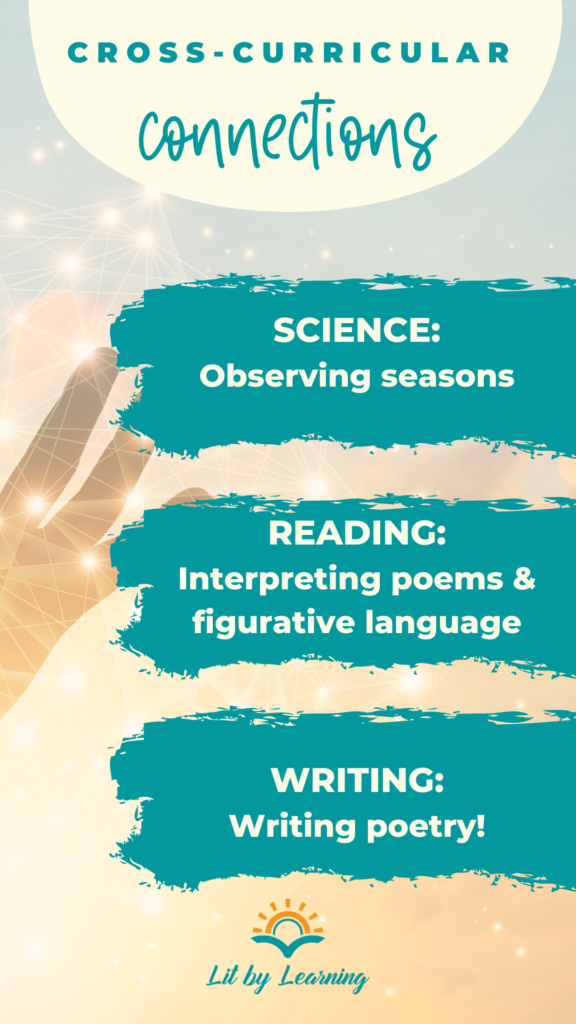
Reading nature poetry for kids: recommended mentor texts!
Nature poetry books for kids are not hard to come by, but I have a few that are particular favorites! First, I highly recommend Laughing Tomatoes / Tomates Risuenos by poet Francisco Alarcon. These poems use lovely figurative language, are approachable for young writers, and are illustrated beautifully!
I also love Kenard Pak’s book Goodbye Winter, Hello Spring. While not technically a poetry book, it’s written lyrically and highlights the many changes that take place over this beautiful time of year! It’s also the perfect mentor text for students to write their own “Goodbye _____, Hello ______” poems!
Finally, check out Daniel Finds A Poem by Micah Archer. This is a lovely book about a boy trying to define poetry and discovering poems in the world around him.
For more nature poetry for kids’ book recommendations, head to my bookshop!
Writing nature poetry for kids in spring!
Observing the world around them PLUS enjoying the mentor texts posted above is wonderful inspiration for students to write their own poetry! Here are some ideas to spark your and your students’ imaginations!
Craft a 5 senses poem!
It doesn’t get much easier than a simple 5 senses poem. Students simply complete the prompts “I see____, I hear _____ etc.” Combined with an outdoor spring sensory walk + some time to illustrate to their hearts’ content, this is a sure win for budding elementary poets!
Write a haiku about spring!
Create a three-line classic from describing the wonders of Spring! Model counting out the syllables (5-7-5) as you create some class haikus – then let your primary poets do their own thing!
Shape poems about spring flowers – an artful class garden!
Create your own spring garden by crafting poems about spring flowers. Then, as part of the publishing process, create flowers and with the poems on them!
Craft a seasons changing poem!
Use the book Goodbye Winter Hello Spring by Kenard Pak as a model and encourage your elementary writers to create their own “Hello, Goodbye!” poems. They’re sure to come up with some clever ideas!
Make 3-D poems!
Chicago recently had a string of rainy days, so my class and I used the extra indoor recess time to create rain-inspired poems. Students wrote their poems on various-colored rain drops and then we turned it into a 3D display (see below!) The students are so excited to show their hard work off to their parents!
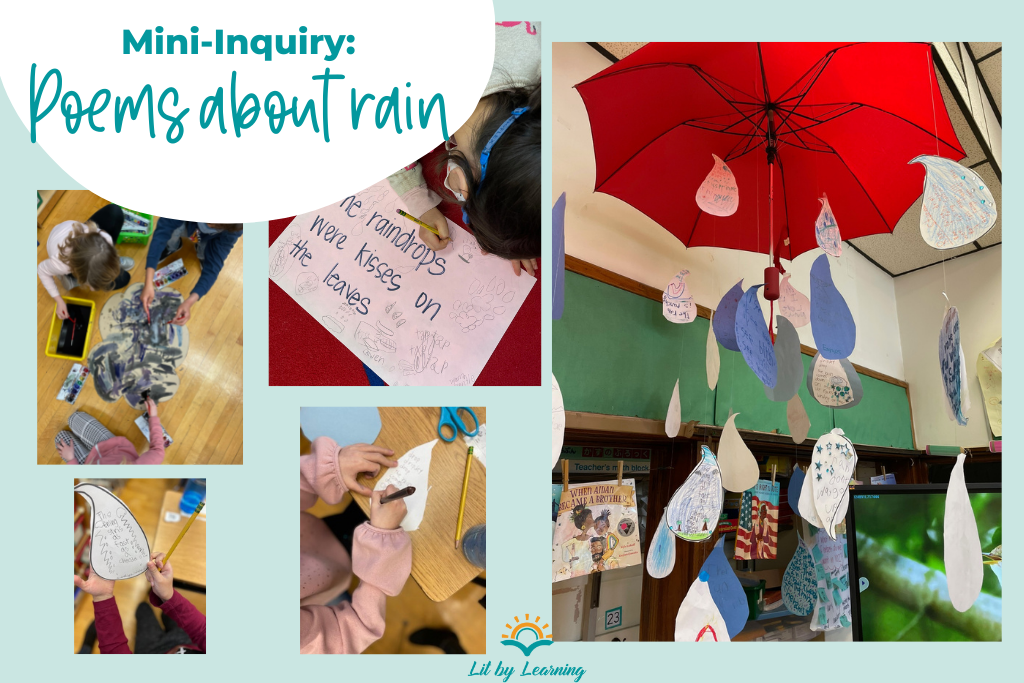
Play with perspective!
What would a poem written by a worm sound like? A freshly-born baby bunny? I wonder what the mud would say as it’s being splashed in by kids in rubber boots. Encourage your elementary students to play around with perspective as they craft their poems!
Play with spring words!
Encourage students to collect, illustrate and then play with spring words. Encourage artful, unexpected connections and manipulate the words to form simple similes and metaphors. For something ready-made, grab my “magnetic” poetry resource here or, for a digital option, check out this easy-to-use Google Slides magnetic poetry!
More nature poetry for kids tips and tricks!
Looking for more ideas for teaching poetry to kids? The more creative, the better! Check out the ideas below and don’t forget to check out my other blog posts about National Poetry Month and beyond!
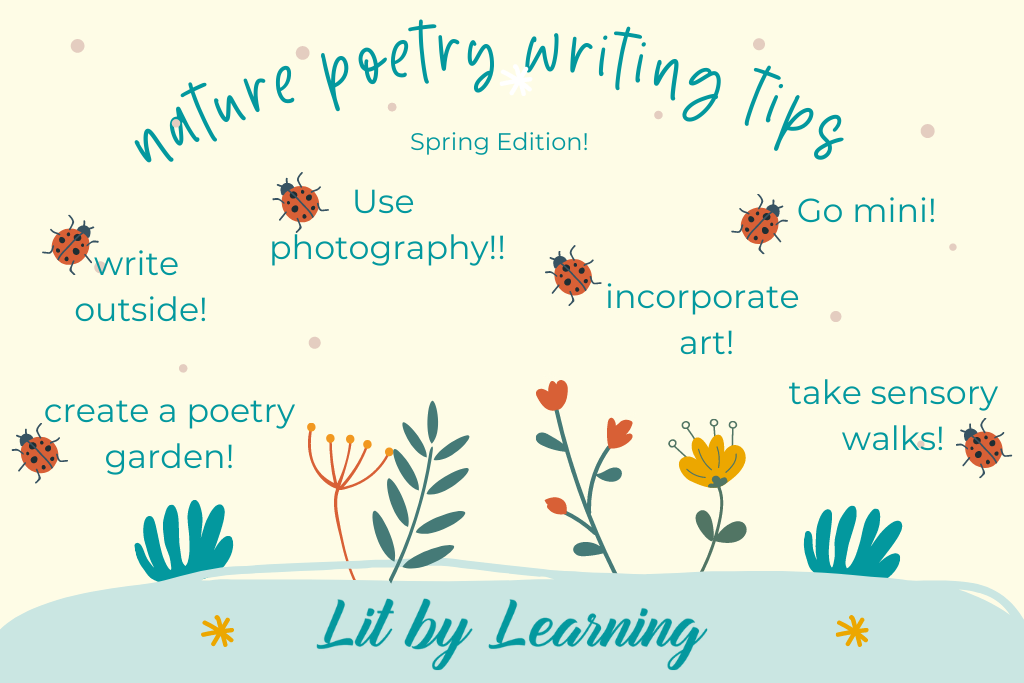
Read more from Lit By learning!
Make sure to check out these other related posts from Lit BY Learning!
- Spring Magnetic Poetry for Kids
- What is poetry? 8 poems about poetry to jumpstart your elementary unit
- 3 engaging writing poetry prompts for elementary poets
Did you get your free learner centered classroom guide yet?
Don’t miss out on this invaluable resource! Get your guide today!
